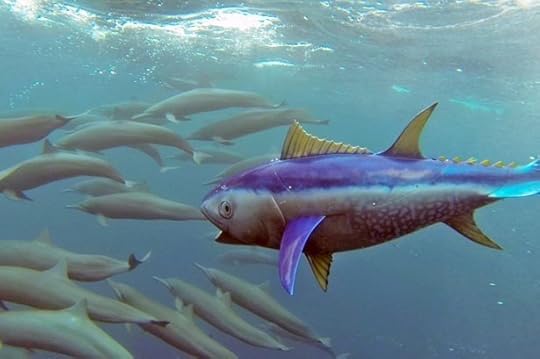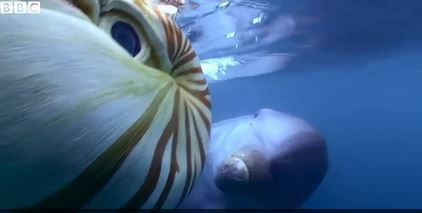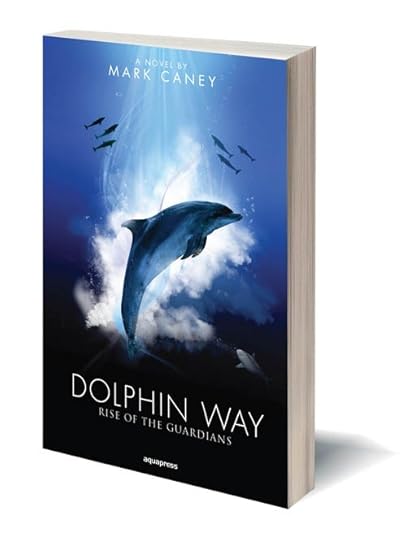Mark Caney's Blog, page 30
January 8, 2014
Pakistan plans to use Russian dolphins for shows
A maritime museum in Pakistan’s most populous city, Karachi, is housing an unlikely trio for a whale and sea lion show that begins this week and owes its existence to the growing role of Russia in the international marine-mammal trade.
A trained beluga whale, dolphin, and sea lion will perform for the public three times a day in “a water show that will be the first of its kind to take place in Pakistan,” according to “The Express Tribune.”

A “large pool…built expecially for the purpose” sits in a stadium that holds around 2,000 people at the Maritime Museum, near a Pakistani Navy training and educational facility, PNS Karsaz.
The animals will jump, sing, and “give a stellar performance” once the public show begins next week, the report adds.
The decidedly exotic import thrusts Pakistan and the show’s organizers into a raging global debate over the capture and treatment of intelligent marine mammals, particularly those with complex family and social structures and behaviors that cannot be approximated in tanks.
The World Wide Fund for Nature is among those criticizing the decision to bring the captive cetaceans (dolphins and whales) to Pakistan for oceanarium shows.
“We strongly suggest to the government and the agencies concerned to reconsider the initiative and look into the matter in detail. There are sufficient opportunities for public to see wild dolphins off the shore of Pakistan, especially Karachi. They can be observed without too much effort or expense and the experience is much more rewarding,” Pakistan’s “Dawn” newspaper quoted the group as saying.
Behavioral scientists and opponents of captivity for such wild animals are likely to cringe at the message that organizers are hoping to deliver to Pakistani audiences.
The “Tribune” article quotes “Ali, one of the organisers, at the special demo show they held for the media on Saturday [January 4]” as saying the show “aims to create awareness about the species’ human-friendly nature.”
The whale-captivity debate has been kindled most recently by the American documentary film “Blackfish,” which chronicles the plight of killer whale Tilikum, involved in the deaths of three people since his capture off Iceland three decades ago.
The film is an indictment of the secretive trade in such intelligent mammals and the massive funds that they can generate in the entertainment industry.
Among its biggest targets is the perception that killer whales and other such animals — which generally live in tightly based social groups that travel tens of kilometers or more every day — can be acclimated to sedentary lives surrounded mostly by humans.
Source: Radio Free Europe

‘Lonely’ dolphin making human friends, but experts ask swimmers to stay away
A lone dolphin is making friends along Australia’s east coast, coming to shore to play with surprised humans, but wildlife experts are pleading with people to avoid interaction to ensure she stays wild.
The bottlenose dolphin, estimated to be around three to four years of age, has been getting attention since becoming stranded at Sussex Inlet in September 2012.
Wildlife experts decided to catch and release her back into the ocean after they became concerned that some people were harassing the animal.
In the last two weeks she has been seen in Pittwater, north of Sydney, and at beaches down to Sydney harbour. On Monday she interacted with swimmers and surfers off Shelly beach, Manly, Fairfax reported.
She appears to have little fear of people, joining them for a swim or a surf for hours at a time, even if the swimmers try to avoid it.
Reece Monley, a resident of Sydney’s northern beaches, was surfing at Long Reef on Thursday and told Guardian Australia the dolphin had been in the area all day.
“It jumped right next to everyone, then it would pop up half a foot away and swim right next to you,” he said.
“It was just circling everyone underneath them like a shark. It would look at you, pop up and then go back down. It didn’t care if people were touching it – it just kept wanting to be played with. Three girls kept diving down with it.”
Shona Lorigan, vice-president of the Organisation for the Rescue and Research of Cetaceans in Australia (Orrca) told Guardian Australia she understood it was difficult to stay away from the animal.
“It’s very hard to resist her when she swims right up to you, but we’re trying to get people to limit their interaction,” Lorigan said.
“Particularly for the surfers it’s very difficult because she’s grabbing their leg ropes and jumping over their boards, so just stay still and enjoy the view.”
Lorigan said Orrca was asking people to follow some “golden rules” and not chase the dolphin, grab her dorsal fin, go anywhere near her tail or feed her.
“It is our hope that by limiting her interactions we are encouraging her to continue being a wild dolphin so she will eventually reintegrate with a wild pod,” she said.
Lorigan said the dolphin had access to a wild pod which lives off the coast of the Sydney northern beaches any time she decided to join it.
Scott Quin was swimming with friends in Pittwater near Palm Beach wharf in early December when the dolphin appeared beside them. He said he had heard the dolphin was in the area.
“The dolphin swam up [to us], and it would swim around the anchor lines of boats and things rubbing up on them,” Quin told Guardian Australia.
“Then it would come over and nudge at you, it definitely liked a good scratch. If you swam away it would swim around you jumping out of the water and sometimes over you.
“Whenever a boat came near or the ferry arrived or left it would swim off for a while and go have a good look at what was going on, swim around the boats for a bit and then come back,” he said.
Quin said he and his friends understood the potential risks to them, but said it was part of swimming in the ocean.
“I can completely understand the wildlife groups wanting it to rejoin a pod,” he said.
“It has had plenty of opportunities to, even before it started to get this friendly with people. Maybe it’s just lonely now.”
On Monday the National Parks and Wildlife Service issued a statement saying it was aware of the dolphin and asked people not to actively swim with it.
“I cannot stress enough that this is a wild animal and if it is threatened it will act on instinct and could unintentionally hurt someone,” NPWS Sydney Harbour area manager, Michael Treanor, said.
“Ultimately, if that happens the animal may need to be taken into captivity, which is not what anyone wants and what we have been working so hard to avoid.”
Source: Guardian

January 3, 2014
Dolphins say “I love you” with a bouquet of seaweed
So much can be said with flowers – whether it’s I’m sorry, congratulations or simply I love you, they’re a gesture most people can identify with.
And so, it seems, can dolphins. A curiously romantic side to these charming marine mammals has been revealed in a stunning new BBC TV series, the first episode of which was released on 3rd January.
Documentary crews have been able to observe a male bottlenose dolphin wooing his sweetheart with a garland of seaweed.
She poses coquettishly with her gift, before their love is sealed by mating.
Documentary-makers went to extraordinary lengths to capture the dolphins’ mating rituals, using 13 remote-control devices shaped like turtles, tuna, clams and squid in the ocean off the coast of Mozambique.
They found that dolphins can be pushy parents, loyal friends, and prone to adolescent bursts of machismo.
‘This is the first time the daily lives of dolphins have been filmed at close range in such intimate detail,’ says zoologist and film-maker Rob Pilley.
Full story: Daily Mail

January 2, 2014
Secret robot cameras that capture the lives of dolphins
Robot dolphins, a robot tuna and a robot sea turtle fitted with HD cameras have filmed close encounters with real dolphins to capture their lives and reveal their mysteries to landlubbers watching warm and dry from their sofas.
 “Swimming alongside some of the most captivating and clever animals on the planet, these new spies are always on the move — catching the waves with surfing bottlenose dolphins and speeding with a megapod of spinner dolphins,” according to BBC Media about its program “Dolphins: Spy In the Pod” to air Jan. 2
“Swimming alongside some of the most captivating and clever animals on the planet, these new spies are always on the move — catching the waves with surfing bottlenose dolphins and speeding with a megapod of spinner dolphins,” according to BBC Media about its program “Dolphins: Spy In the Pod” to air Jan. 2
Our spy creatures had to keep pace with fast-moving dolphins, often out in the deep ocean,” said wildlife filmmaker John Downer, producer of the two-part TV series for BBC One. “The dolphins were very curious about their new neighbors and allowed them into their lives.”
The robotic sea animals are meant to trick the dolphins with the cameras lenses hidden inside their eyes, according to Wetpixel, the underwater photography magazine. Downer’s documentary has never-before filmed behavior taken by the underwater robot entourage that also includes a nautilus and a ray.
Each radio-controlled sea animal is packed with high tech equipment. The film has one sequence shot off the coast of Costa Rica in which the robotic Spy Dolphin is guided by experts in a high-speed inflatable boat. The dolphin robot easily keeps pace with the real-life spinner dolphins, which can cover 250 miles a day. When the spinner dolphins dive underwater, the filming is transferred from Spy Dolphin to the superfast robotic Spy Tuna, according to the Mirror. In the depths of the ocean, the tuna robot caught up with a megapod containing thousands of dolphins and filmed the spectacle.
 Downer’s most unusual robotic sea animal is the Spy Nautilus, which is based on a brightly-colored mollusk. Odd though it may appear, Spy Nautius was welcomed by a family of bottlenose dolphins in the Indian Ocean, which surrounded the robot creature. That gave the camera in the robot Nautilus’ eyes a rare close-up of a tiny, five-day-old calf, still wrinkled from birth, the Mirror reported.
Downer’s most unusual robotic sea animal is the Spy Nautilus, which is based on a brightly-colored mollusk. Odd though it may appear, Spy Nautius was welcomed by a family of bottlenose dolphins in the Indian Ocean, which surrounded the robot creature. That gave the camera in the robot Nautilus’ eyes a rare close-up of a tiny, five-day-old calf, still wrinkled from birth, the Mirror reported.The collection of motorized sea animals captured a variety of fascinating footage. The robot Spy Turtle filmed bottlenose dolphins surfing the waves. Spy Dolphin and Spy Ray got lucky off the Florida coast and were able to film a pod of dolphins stirring up mud to encircle their prey — a mullet.
The first episode screens in the UK today at 8pm on BBC1.
Source: International Science Times

January 1, 2014
Hidden cameras show new dolphin behaviour
Film-makers have infiltrated the ocean with secret cameras to capture dolphin behaviour in the wild as it has never been seen before.
They enlisted a menagerie of creatures, such as a molluscs, sea turtle and squid, with hidden lenses to get up close and personal for a new BBC natural history programme that will be shown on the BBC on Thursday.
In the clip here, the series director John Downer and producer Rob Pilley spoke to BBC
Breakfast
Dolphins – Spy in the Pod begins on January 2 on BBC One at 8pm.

December 29, 2013
Dolphins filmed getting high
Dolphins have been filmed for the first time chewing on toxic puffer fish, which when digested in small doses can have a ‘narcotic-like effect’.
The mammals, known for their intelligence, were filmed by remote control cameras disguised as sea animals going into a trance-like state after gently handling the toxic fish.
The footage is part of the BBC series Dolphins: Spy in the Pod by wildlife filmmaker John Downer, captured by one of the underwater cameramen.
 Zoologist and series producer Rob Pilley said that it was the first time dolphins had been filmed behaving this way. The dolphins are seen deliberately but gently playing with the puffer fish, a creature known to be intoxicating, passing it between each other for 20 to 30 minutes at a time.
Zoologist and series producer Rob Pilley said that it was the first time dolphins had been filmed behaving this way. The dolphins are seen deliberately but gently playing with the puffer fish, a creature known to be intoxicating, passing it between each other for 20 to 30 minutes at a time.
He said: ‘We saw the dolphins handle the puffers with “kid gloves,” very gently and delicately like they were almost milking them to not upset the fish too much or kill it.
‘As a result the fish released various toxins as a defence. The dolphins then seemed to be memorised and hung there up near the surface of the water.’
Mr Pilley said that the dolphins treated the puffer fish very differently to their normal prey which they normally torn apart.
He said: ‘The dolphins were specifically going for the puffers and deliberately handling them with care. Dolphins seem to be experts on how to prepare puffers and how to handle them.’
Full story: Daily Mail

December 23, 2013
Winner of Dolphin Way Giveaway Announced
Congratulations to Teresa J Todd of Charlotte, USA who was the winner in the Goodreads Christmas Giveaway competition that just ended! Your signed copy of Dolphin Way is on its way to you now.

December 22, 2013
December 19, 2013
Win a copy of Dolphin Way for Christmas!
Goodreads Book Giveaway

Dolphin Way
by Mark Caney
Giveaway ends December 22, 2013.
See the giveaway details
at Goodreads.

December 18, 2013
New Device May Open Up Communication With Dolphins
Over the years, scientists have discovered how intelligent dolphins really are. We know these playful and social mammals whistle to say hello and even , but will they ever communicate with us?
Well, they just might thanks to work conducted by marine biologist, Denise Herzing.
After years of studying and interacting with wild Atlantic Bottlenose dolphins in the Bahamas, Herzing developed the Cetacean Hearing and Telemetry (CHAT) device, which she introduced during a recent TED talk.
The CHAT device is an acoustic, underwater and wearable prototype computer that divers can use to interpret certain dolphin noises in real time. The device works by sending out whistles into the water which match dolphin noises associated with certain toys. The dolphins hear this and either go for the toy or mimic it. If the dolphin noise matches a word, the computer locates which dolphin made the noise and translates what it means to the diver though bone conduction.
Herzing hopes this new device will help translate and broadcast dolphin sounds underwater, opening an instant form of communication between human diver and wild dolphin. Although the dolphins are fully capable of this type of communication, there are signs they may not want to communicate with us in this fashion.
Justin Gregg, co-editor of the academic journal Aquatic Mammals, suggests there is a potential for a lack of communication in Herzing’s study due to the dolphins’ difference in brain development and social attitude.
As we all know, we as humans love to share our inner thoughts with the world, which has benefited the development of our species and intelligence, but dolphins have developed socially without this need to share. So perhaps we are approaching dolphin communication from a far too narrow anthropocentric angle and are overlooking the fact that dolphins are just as intelligent as us but in a different way.
Looking at dolphin communication in a different perspective may be easier said than done, but then again, maybe dolphins don’t want to communicate with us because of the way we treat them.
Source: onegreenplanet







